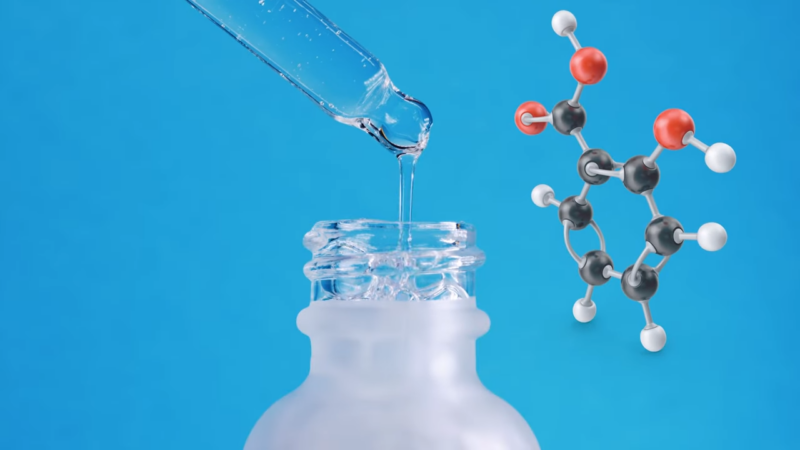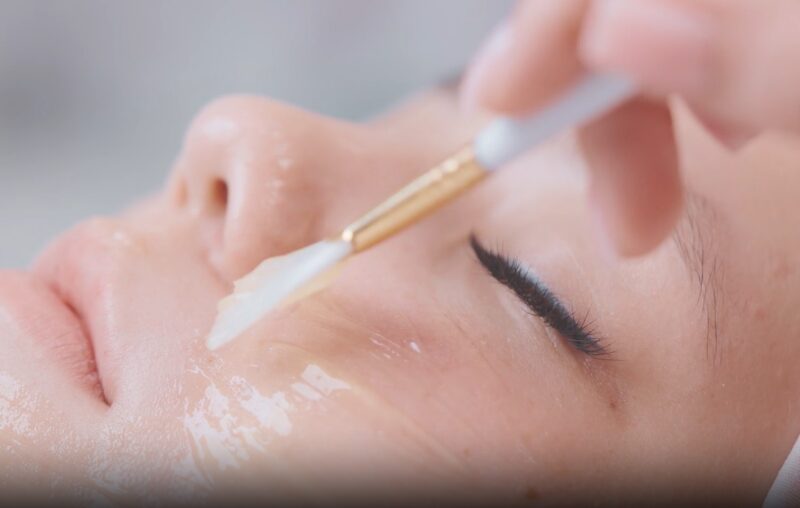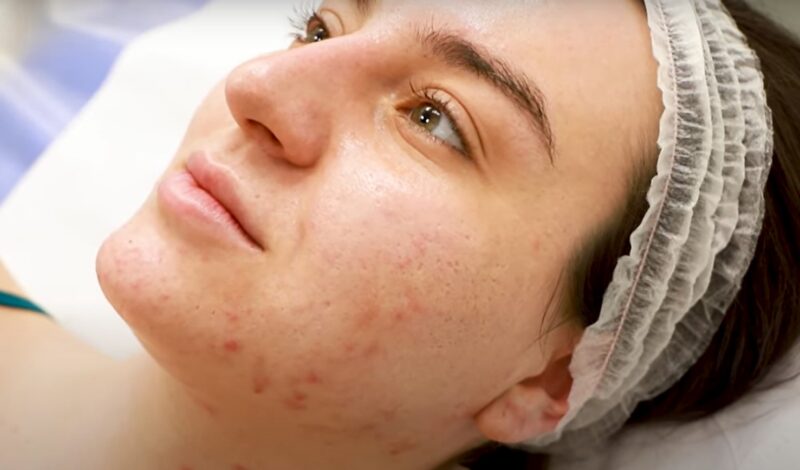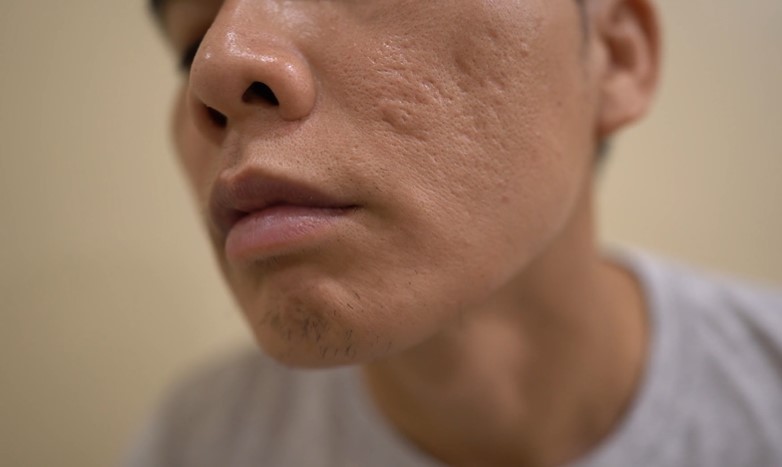If you’ve ever had acne, you know how frustrating it can be to deal with the scars it leaves behind. You’re not alone – millions of people around the world struggle with acne scars, which come in different shapes and sizes. Some look like tiny holes, others like dents, and some like raised bumps.
They can be caused by many things, such as having oily skin, waiting too long to treat acne, popping pimples, or inheriting bad skin genes. But don’t lose hope – there are many ways to treat acne scars, from creams and gels to peels and lasers.
The key is to find out what works best for your skin type and scar severity. Let’s explore some of the options and tips to help you get rid of acne scars for good.
1. Salicylic Acid

Salicylic acid is a beta hydroxy acid known for its effectiveness in treating acne and acne scars. It works by exfoliating the skin, unclogging pores, and reducing inflammation. For best results, use products containing salicylic acid consistently, as part of your daily skincare routine.
Side effects may include dryness, peeling, and sensitivity to sunlight, so it’s important to use sunscreen and moisturize regularly.
Salicylic acid, when included in skincare products at concentrations of up to 2%, is recognized by the FDA as a safe and effective treatment for acne. This means you can buy products containing this amount of salicylic acid without a prescription, and they’re approved for fighting acne.
2. Alpha Hydroxy Acids
Alpha hydroxy acids (AHAs) exfoliate the skin’s surface, promoting new cell growth and reducing the appearance of acne scars. Common AHAs include glycolic and lactic acids. To maximize benefits, apply AHA products every other day, gradually increasing to daily use as your skin adjusts. Potential side effects include skin irritation and increased sun sensitivity, necessitating the use of sunscreen.
AHAs, such as glycolic and lactic acid, work by dissolving the bonds between dead skin cells, allowing them to be sloughed away more easily, revealing smoother, brighter skin underneath.
3. Lactic Acid
Lactic acid, a type of AHA, gently exfoliates to improve skin texture and pigmentation. It’s particularly suitable for sensitive skin. Incorporate lactic acid into your skincare routine slowly to avoid irritation. Continuous use yields noticeable improvement in scar appearance. Mild irritation or redness can occur, which usually subsides with regular use.
A study provided by Catherine K. Huang is comparing 5% versus 12% lactic acid found that application of 12% lactic acid twice daily for 3 months resulted in increased epidermal and dermal firmness and thickness with clinically improved skin smoothness and appearance of lines and wrinkles.
4. Retinoids
Retinoids promote cell turnover and collagen production, aiding in the reduction of acne scars. Available in various strengths, start with a lower concentration to minimize irritation. Apply retinoids at night, as they can make skin more sensitive to sunlight. Common side effects include dryness, redness, and peeling, which often improve with time.
The study by Kaitlyn Bader found that the higher fixed combination not only prevented atrophic scars, but also decreased the number of scars from 12 down to 9.5.
5. Chemical Peeling

Chemical peels involve applying a strong acid to the skin to remove the top layers, encouraging new, smoother skin to grow. Professional consultation is essential to choose the right type of peel for your skin condition. Downtime varies with peel intensity. Side effects can include redness, peeling, and in rare cases, scarring or infection.
According to the American Society of Dermatologic Surgery: The treatment removes moderate lines, age spots, freckles and shallow scars. Patients will see a dramatic improvement in skin appearance.
6. Micro-needling
Micro-needling creates tiny punctures in the skin, stimulating collagen production and improving scar appearance. Professional treatment is recommended for safety and effectiveness. Results are cumulative, requiring multiple sessions. Side effects are usually minor, including redness and sensitivity for a few days post-treatment.
Studies show micro-needling can improve the appearance of acne scars by up to 60% after a series of treatments, making it a highly effective option for scar reduction.
7. Laser Treatment
Laser treatment reduces acne scars by removing the top layer of skin and stimulating collagen production in deeper layers. It requires professional administration and may need several sessions for optimal results. Post-treatment, expect redness, swelling, and peeling. Risks include hyperpigmentation and, rarely, scarring.
Recovery is much faster when compared with fractional ablative lasers, The risk profile is also lower. Unfortunately despite multiple treatments with associated downtime improvement in acne scarring is mild and often will total no greater than 15-20% despite multiple treatments.
8. Dermabrasion
Dermabrasion is a more intensive procedure that sands away the top layers of skin to smooth out scars. It’s performed by a dermatologist and is suitable for severe scarring. Recovery takes several weeks, during which the skin is raw and sensitive. Potential side effects include changes in skin color, scarring, and infection.
Dermabrasion can result in a 50% or greater improvement in the appearance of acne scars, as reported in clinical evaluations, making it suitable for more severe scarring.
9. Surgery

Surgical options, such as subcision or excision, are available for deep or resistant acne scars. These procedures should only be performed by qualified professionals. Recovery and results vary based on the specific surgery and individual healing processes. Risks include infection, changes in skin color, and further scarring.
Surgical treatments for acne scars have shown high satisfaction rates. However, “No one treatment is able to best treat all scars.“
10. Avoid Picking or Squeezing Acne
Preventing acne scars starts with not picking or squeezing pimples, which can push bacteria deeper and cause more significant scarring. Maintaining a hands-off approach helps the skin heal naturally and reduces the risk of scarring. Adopting a consistent skincare routine and seeking early treatment for acne can also prevent the formation of scars.
Acne are more common among teenagers due to hormonal changes. Therefore, implementing a proper skincare routine is the key.
FAQs
What is the hardest acne scar to treat?
The hardest acne scar to treat is the ice pick scar. It is a deep and narrow hole in the skin that goes far under the surface. It needs procedures like punch excision or laser therapy to remove it.
Do acne scars get worse with age?
Acne scars can get worse with age, especially if the skin loses collagen and elasticity. This can make the scars more visible and noticeable. Collagen and elasticity are substances that keep the skin firm and smooth.
How to have a clear skin?
To have a clear skin, you should follow some basic skincare tips. You should wash your face twice a day with a gentle cleanser, moisturize your skin regularly, use sunscreen to protect your skin from the sun, avoid touching your face with dirty hands, and use mild products that suit your skin type.
You should also exfoliate your skin once or twice a week to remove dead skin cells, get enough sleep to let your skin heal, manage your stress levels to prevent breakouts, and eat a healthy diet that includes fruits, vegetables, and water.
Does vitamin C help with acne scars?
Vitamin C can help with acne scars by helping the skin produce more collagen, which is a protein that repairs the skin tissue. Vitamin C can also help fade the dark spots and redness caused by acne scars. Vitamin C works better when it is combined with other ingredients like ferulic acid and vitamin E, which enhance its effects and protect the skin from damage.
Last Words
Effectively managing acne scars requires a combination of patience, the right skincare strategies, and sometimes professional treatments. While numerous options exist to improve the appearance of scars, individual results can vary. It’s essential to approach scar treatment with realistic expectations and consider professional advice to tailor a regimen that suits your specific skin needs and goals.

